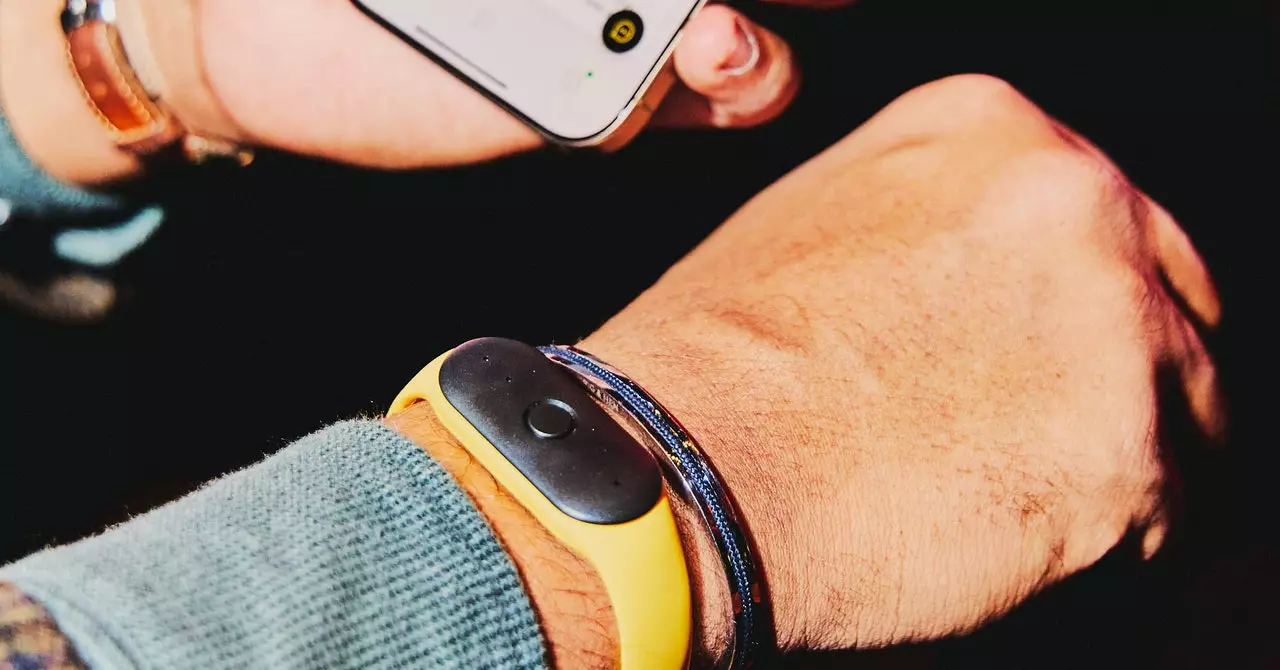In the rapidly evolving landscape of technology, wearables that enhance our daily lives have become more sophisticated than ever. Recent innovations highlight the shift towards ambient computing—devices that seamlessly integrate into our environments to serve as passive assistants. Two cutting-edge examples showcased at CES include the Bee AI’s Pioneer wearable and Omi’s intriguing offering. Both devices symbolize the dawn of a new era, where the lines between digital assistants and our everyday lives are increasingly blurred.
The Bee AI Pioneer stands out as a wearables revolution. At first glance, the device resembles a typical fitness tracker adorned with a cheerful yellow color. However, this unobtrusive gadget is at the forefront of a paradigm shift; it serves not merely to track physical activity but rather as a dedicated recorder that captures the essence of everyday human interactions. By processing conversations and generating customized to-do lists and summaries, this technology resembles an attentive personal assistant without requiring users to engage in traditional command prompts.
In contrast, Omi takes the concept of interaction a step further. With an unconventional design that can be worn either around the neck or affixed to the temple, Omi is equipped with an electroencephalogram (EEG) sensor. This positions the device to listen actively when it feels that the user is focusing on it. The compelling claim is that through thought alone, users can manage tasks and gain insights, effectively making this wearable a seamless extension of the mind.
What sets these advancements apart from the voice assistants we are familiar with is their inherent ability to operate in a passive mode. Conventional voice assistants, whether integrated into smartphones or smart speakers, require users to engage by either invoking a wake word or tapping to activate. In stark contrast, the Bee AI and Omi devices exemplify a future where wearable technology is perpetually active, lurking in the background, listening attentively to snippets of conversation while gathering valuable information for the user.
These wearable devices, despite their impressive capabilities, are notably affordable. The Bee AI Pioneer retails at around $50, while Omi is priced slightly higher at $89. This accessibility has the potential to democratize the technology, ensuring that a wider audience can engage in the benefits of ambient computing. However, the true value lies not solely in hardware but rather in the platforms that power them. Both devices utilize sophisticated AI algorithms and often operate through subscription models, tapping into extensive language processing frameworks to dissect conversations and yield actionable insights.
Behind these innovations are visionary entrepreneurs who have navigated the tumultuous waters of the tech industry. Maria de Lourdes Zollo and Ethan Sutin, the masterminds behind Bee AI, have roots entrenched in social media and content-sharing platforms. Their previous endeavors, including their tenure at Squad, have shown them the potential of collaborative technology. The launch of Bee AI was born not from overnight inspiration, but from years of evolution and adaptation in response to an ever-changing digital landscape.
Sutin, who began contemplating a personal AI assistant as early as 2016, emphasizes that the technology has finally evolved to make such ideas feasible. The culmination of their efforts materialized in a beta version of their platform less than a year ago, receiving substantial feedback from an active user community even before the formal hardware release.
As the movement towards ambient computing matures, we are forced to reflect on the implications of such pervasive technologies. There is an undeniable convenience in having devices that provide pertinent reminders and insights based solely on our day-to-day activities. However, this convenience comes with heightened concerns surrounding privacy, data security, and the ethical considerations of maintaining an “always-on” device.
Moreover, the absence of explicit indicators, such as lights signaling when the wearable is recording, raises further questions. Users might remain blissfully unaware of the extent to which their conversations are being documented, leading to potential discomfort upon realization. As the technology continues to evolve, it becomes increasingly crucial for developers to implement ethical standards and transparency surrounding data usage and user consent.
As we stand on the brink of a new technological epoch, characterized by ambient computing and intelligent wearables, we must embrace the potential these innovations hold for enhancing our daily lives. However, we must also remain vigilant about the inherent ethical considerations and privacy challenges these advancements bring. The future may be bright and full of promise, but it demands accountability and mindful engagement from both developers and users alike. Only then can we harness the true power of technology to enrich our lives responsibly.

